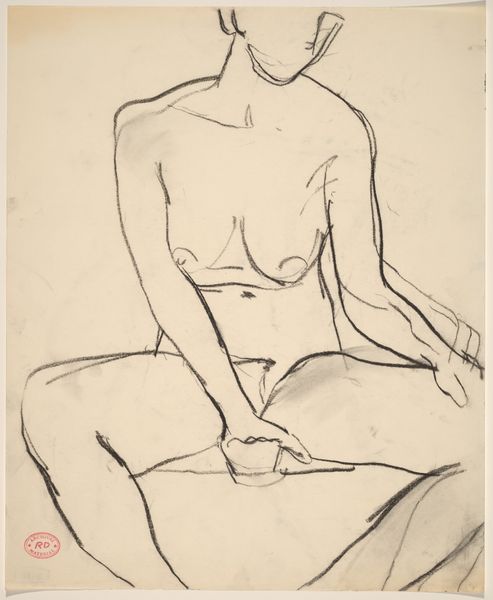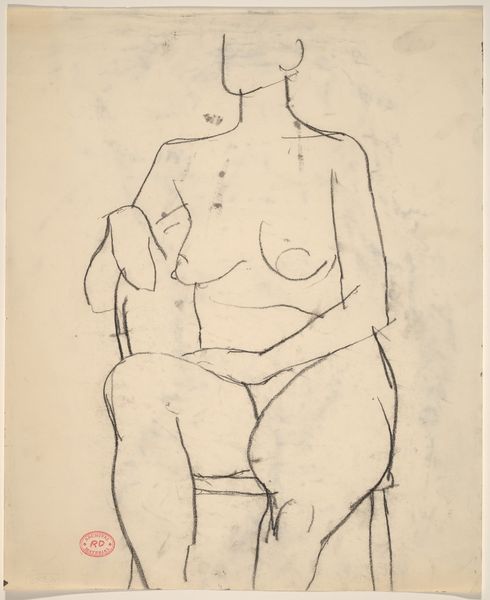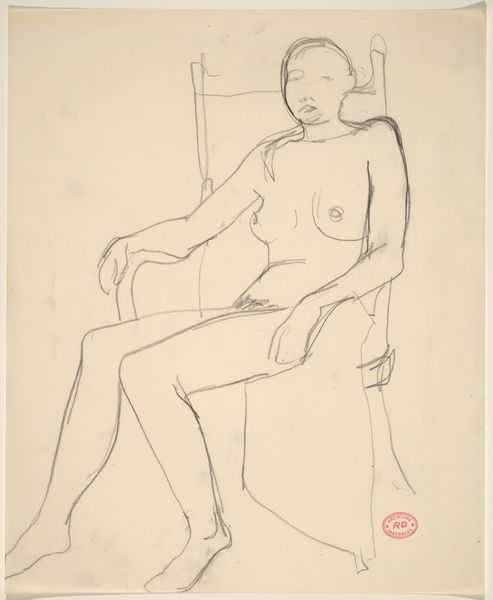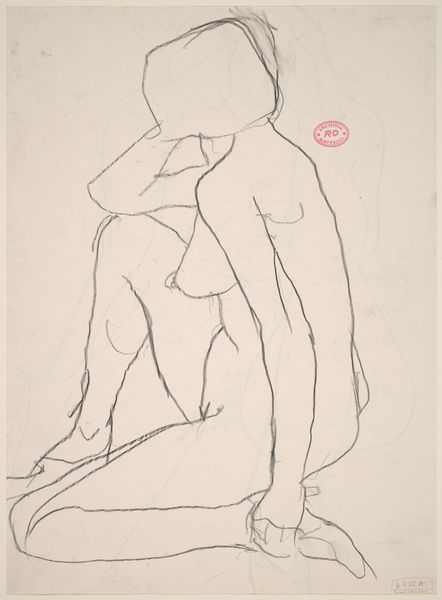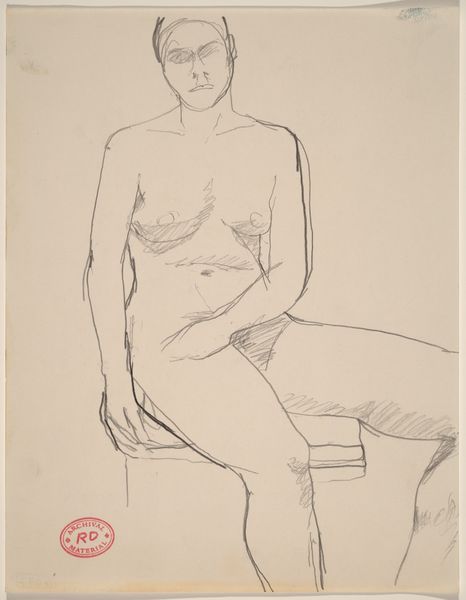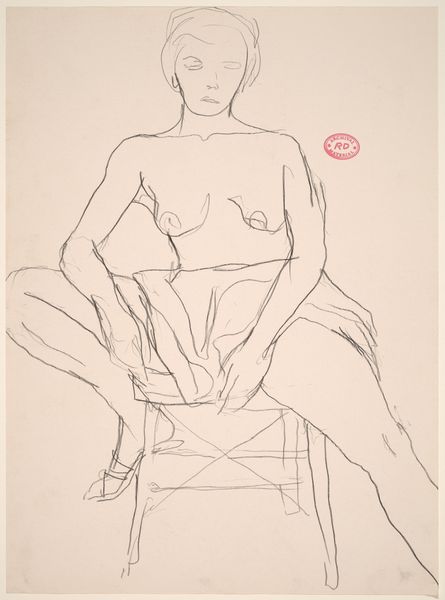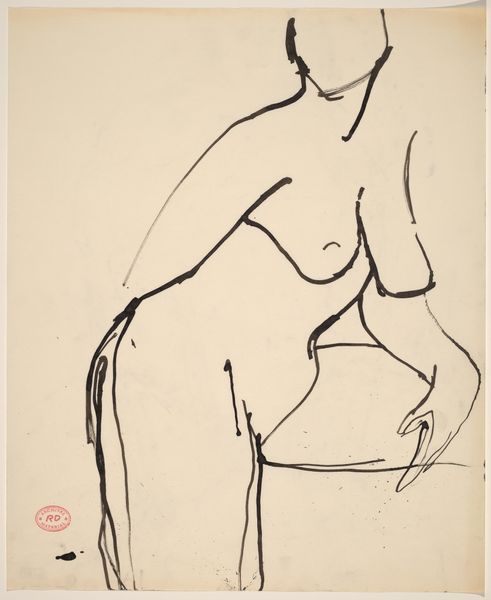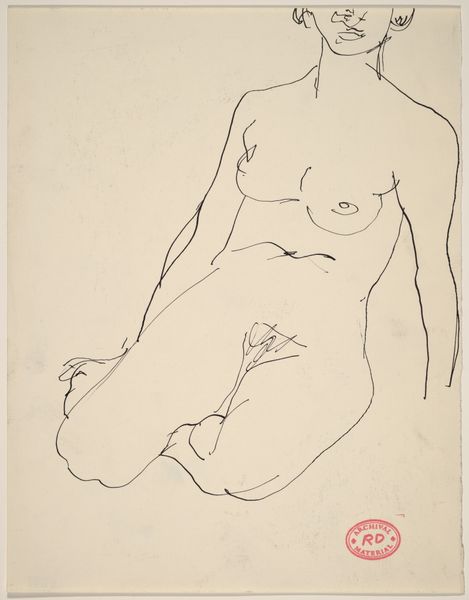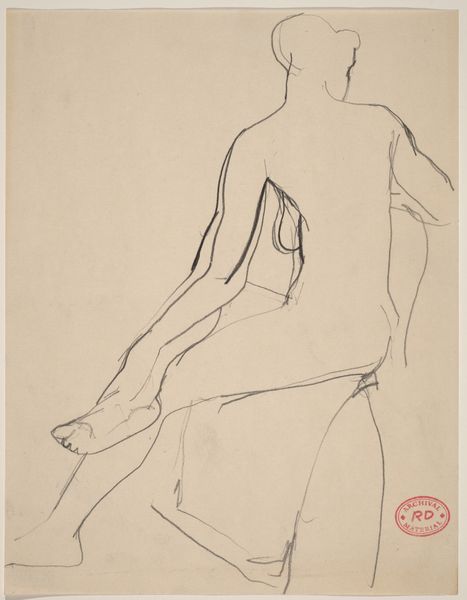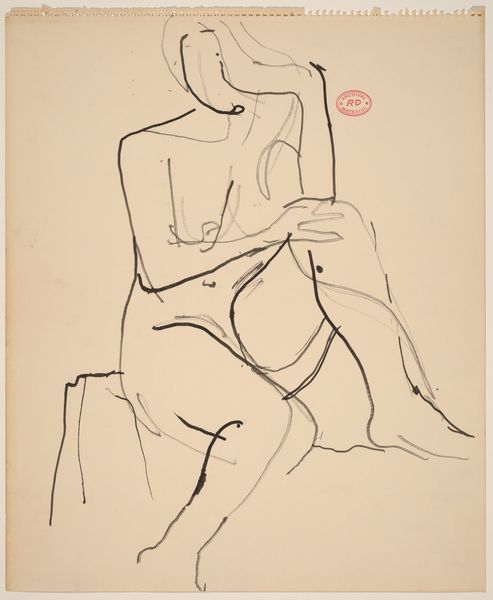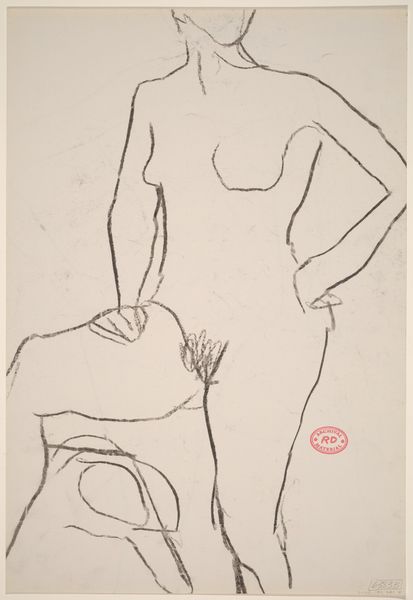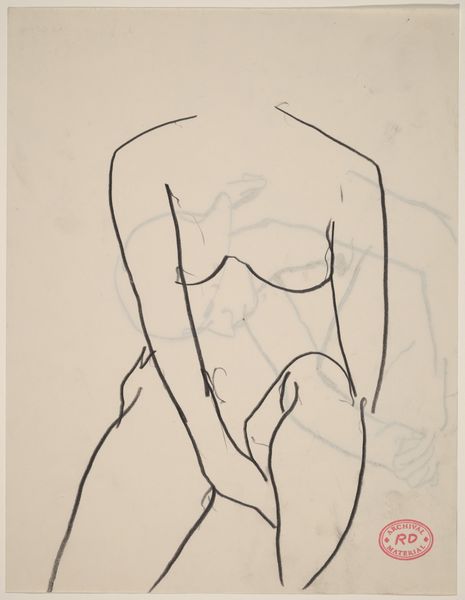![Untitled [nude seated with hands resting between her thighs] by Richard Diebenkorn](/_next/image?url=https%3A%2F%2Fd2w8kbdekdi1gv.cloudfront.net%2FeyJidWNrZXQiOiAiYXJ0ZXJhLWltYWdlcy1idWNrZXQiLCAia2V5IjogImFydHdvcmtzLzIwMWEwOWE5LThmMmEtNDlkNC05OWNlLTI5NGRhNDFiZDhjZi8yMDFhMDlhOS04ZjJhLTQ5ZDQtOTljZS0yOTRkYTQxYmQ4Y2ZfZnVsbC5qcGciLCAiZWRpdHMiOiB7InJlc2l6ZSI6IHsid2lkdGgiOiAxOTIwLCAiaGVpZ2h0IjogMTkyMCwgImZpdCI6ICJpbnNpZGUifX19&w=3840&q=75)
Untitled [nude seated with hands resting between her thighs] 1955 - 1967
0:00
0:00
drawing, pencil
#
abstract-expressionism
#
drawing
#
figuration
#
bay-area-figurative-movement
#
pencil
#
nude
#
realism
Dimensions: overall: 27.9 x 21.6 cm (11 x 8 1/2 in.)
Copyright: National Gallery of Art: CC0 1.0
Curator: I find this Richard Diebenkorn drawing quite captivating. It's an untitled piece, a nude seated with her hands resting between her thighs, rendered in pencil sometime between 1955 and 1967. There’s something very immediate about it, don't you think? Editor: Indeed. The stark lines against the paper feel almost vulnerable. But, the faceless figure raises interesting questions. In its incompleteness, the figure transcends being just a body. This makes me think about the male gaze and the history of objectifying the female nude, which, considering it's made mid-century, could challenge some notions by erasing typical identity markers of beauty like hair or facial expression, reducing the subject to almost form, if the hand position was less vulnerable seeming. What does it bring to your mind with regard to process? Curator: I see the quickness of the artist's hand—the very essence of mark-making on paper is so evident, isn't it? Look closely and one can tell that there's been adjustments, erasures, and redrawn lines. This reminds me of other artists preoccupied with figure drawing in that era like Willem de Kooning. And how the rawness reflects a postwar context grappling with uncertainty. Editor: Absolutely. You can really trace his process and thinking. Considering the socio-political turbulence of that time—the Cold War, the Civil Rights Movement—it’s hard not to see the fragility mirrored by the figure, this kind of existential questioning. The very act of drawing a nude becomes a subtle act, maybe a commentary on visibility, erasure, or the search for the essence of humanity amidst turmoil. How the materiality here reinforces meaning beyond just rendering form. Curator: It does invite layered readings, doesn't it? A quiet reflection of process, or even protest, on the nature of drawing as labor. Perhaps an introspection into form, but very raw. Editor: Ultimately, this is how art creates meaning—by combining process, material and subject it gives new ways for considering personhood. Curator: That’s a fitting thought. The convergence is potent.
Comments
No comments
Be the first to comment and join the conversation on the ultimate creative platform.
